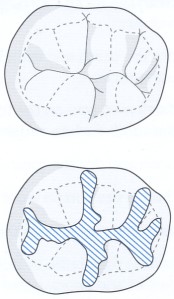
Fissures are grooves usually found in the chewing surfaces of back teeth. They are difficult to keep clean so there is more risk of decay. Fissures can be sealed with tough plastic to protect them. The plastic is runny at first but sets hard, like paint. Sealants may be see-through or tooth-coloured. They are normally only used for children and only on permanent teeth, not on milk teeth. Your dentist will discuss whether your child needs sealants. If they do, you will also have to agree which teeth need to be sealed. The need for sealants will depend on:
The dentist will:
© Stalybridge Dental Care 2009 - 2024
Last updated: 28 November 2023